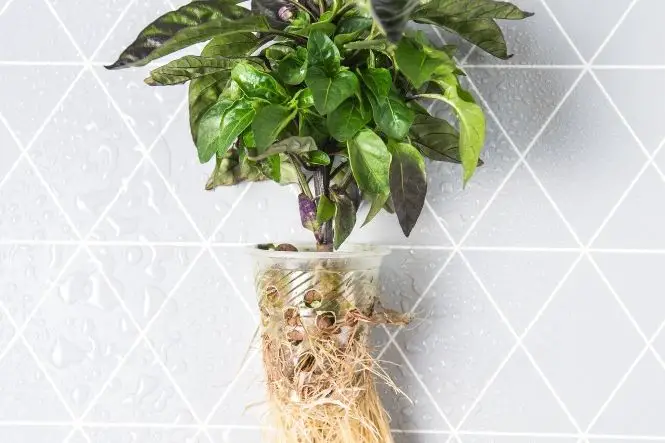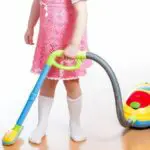Growing plants without soil is known as hydroponics. Plants can be grown in many different growing mediums, such as, gravel, sand, perlite, vermiculite, rockwool, clay pellets, bark or coconut fibre, or in water or even air (the roots hang in a mist of water). When plants are grown normally, in soil, this provides the nutrients, but in hydroponics, the growing medium does not provides any nutrients – these all have to be added in with the water in a nutrient solution.
Table of Contents
Which Growing Medium?
Try some hydroponics, and experiment with growing plants in different growing mediums – which works the best?
Grow some bean or pea seeds in ordinary potting compost. Once they are about three or four centimetres tall, choose ones that are roughly the same size, and gently wash the compost off the roots. Hold them by the leaves rather than the stems.
Make up some garden or houseplant fertiliser as a nutrient solution – follow the instructions on the side of the bottle or packet.
Choose a growing medium for each plant – try:
- Sand
- Fine gravel
- Perlite or vermiculite
- Torn up fabric
- Cotton wool
- Broken up sponge
- Wallpaper paste (try to find one without fungicides, and make the paste up with the nutrient solution).
- Gelatine (melt the gelatine with a little hot water, mix in the nutrient solution, and then allow it to set in a glass).
Put each plant in a glass, and hold it upright. Gently surround the roots with the growing medium (for the gelatine, cut a slit in the surface and ease the roots in). The plant might need to be propped upright with a stake – use a skewer, a lollipop stick, or a pencil.
For the dry growing mediums, water the plant with the nutrient solution, and keep it topped up to the bottom of the roots (don’t flood the growing medium with too much, otherwise the roots won’t be able to get enough air).
Grow a plant in an ordinary pot in potting compost, and keep it moist with plain water (not nutrient solution) – this will act as a control. Make sure all the plants get the same amount of warmth and light.
Measuring Your Plant
For each plant, record the height and the number of leaves at the beginning and then every few days for two or three weeks. Also, record how the plants look – are they green and healthy, or small, yellow and sickly?
Before the plant goes in the growing medium, measure the length of the roots. At the end of the experiment (at the end of two or three weeks), take the plant out of the glass and measure the length of the roots again.
Why do People Use Hydroponics?
Hydroponics is used to grow many commercial crops. Commercial growers (and some amateur gardeners too) use hydroponics because it produces healthy plants that may grow more quickly than plants in the soil. They are also easier to look after – there are likely to be fewer weeds, and growers can control the levels of nutrients more closely. Hydroponics also uses less water and plants don’t need to be watered regularly. It is useful in places where the soil quality is too poor for normal growing, water levels are low, or there just isn’t enough soil.




